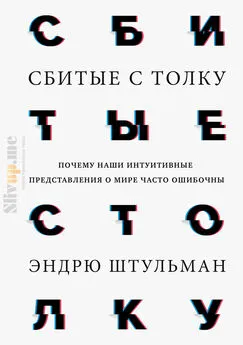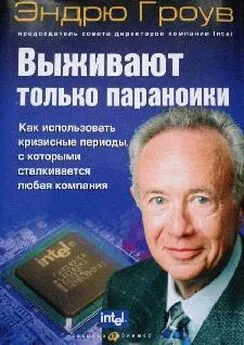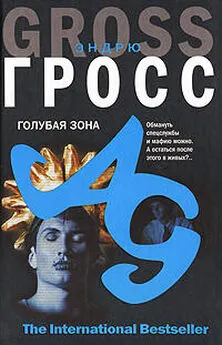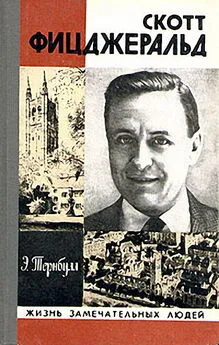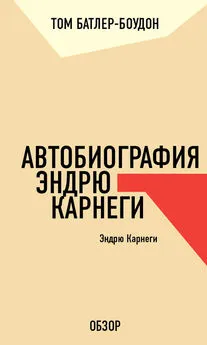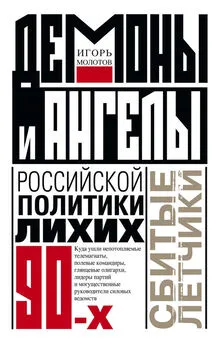Эндрю Штульман - Сбитые с толку
- Название:Сбитые с толку
- Автор:
- Жанр:
- Издательство:Манн, Иванов и Фербер
- Год:2020
- Город:Москва
- ISBN:9785001177616
- Рейтинг:
- Избранное:Добавить в избранное
-
Отзывы:
-
Ваша оценка:
Эндрю Штульман - Сбитые с толку краткое содержание
Сбитые с толку - читать онлайн бесплатно ознакомительный отрывок
Интервал:
Закладка:
Kelemen, D., Rottman, J., and Seston, R. (2013). Professional physical scientists display tenacious teleological tendencies: Purpose-based reasoning as a cognitive default. Journal of Experimental Psychology: General, 142, 1074–1083.
Kempton, W. (1986). Two theories of home heat control. Cognitive Science, 10, 75–90.
Keynes, J. M. (1936). The general theory of employment, interest, and money . London: Macmillan. Издание на русском языке: Кейнс, Дж. М. Общая теория занятости, процента и денег. Избранное / Дж. М. Кейнс. М.: Эксмо, 2007.
Kim, E., and Pak, S. J. (2002). Students do not overcome conceptual difficulties after solving 1traditional problems. American Journal of Physics, 70, 759–765.
Kim, I. K., and Spelke, E. S. (1999). Perception and understanding of effects of gravity and inertia on object motion. Developmental Science, 2, 339–362.
Kimel, S. Y., Huesmann, R., Kunst, J. R., and Halperin, E. (2016). Living in a genetic world: How learning about interethnic genetic similarities and differences affects peace and conflict. Personality and Social Psychology Bulletin, 42, 688–700.
Kirschner, P A., Sweller, J., and Clark, R. E. (2006). Why minimal guidance during instruction does not work: An analysis of the failure of constructivist, discovery, problem-based, experiential, and inquiry-based teaching. Educational Psychologist, 41, 75–86.
Klahr, D., and Nigam, M. (2004). The equivalence of learning paths in early science instruction: Effects of direct instruction and discovery learning. Psychological Science, 15, 661–667.
Klavir, R., and Leiser, D. (2002). When astronomy, biology, and culture converge: Children’s conceptions about birthdays. Journal of Genetic Psychology, 163, 239–253.
Kloos, H., Fisher, A., and Van Orden, G. C. (2010). Situated naive physics: Task constraints decide what children know about density. Journal of Experimental Psychology: General, 139, 625–637.
Kohn, A. S. (1993). Preschoolers’ reasoning about density: Will it float? Child Development, 64, 1637–1650.
Kolbert, E. (2006). Field notes from a catastrophe: Man, nature, and climate change . London: Bloomsbury.
Kozhevnikov, M., and Hegarty, M. (2001). Impetus beliefs as default heuristics: Dissociation between explicit and implicit knowledge about motion. Psychonomic Bulletin and Review, 8, 439–453.
Krist, H. (2010). Development of intuitions about support beyond infancy. Developmental Psychology, 46, 266–278.
Kronberger, N., Wagner, W., and Nagata, M. (2014). How natural is «more natural»? The role of method, type of transfer, and familiarity for public perceptions of cisgenic and transgenic modification. Science Communication, 36, 106–130.
Kuhlmeier, V. A., Troje, N. F., and Lee, V. (2010). Young infants detect the direction of biological motion in point-light displays. Infancy, 15, 83–93.
Kuhn, T. S. (1962). The structure of scientific revolutions. Chicago: University of Chicago Press. Издание на русском языке: Кун, Т. Структура научных революций / Т. Кун. М.: Прогресс, 1977.
Kuo, L. (2012, August 28). Bill Nye, The Science Guy, says creationism is not appropriate for children. Huffington Post. Retrieved from www.huffingtonpost.com/2012/08/28/bill-nye-science-guy-creationism-evolution_n_1835208.html.
Lack, D. (1947/1983). Darwin’s finches. Cambridge, UK: Cambridge University Press.
Lautrey, J., and Mazens, K. (2004). Is children’s naïve knowledge consistent? A comparison of the concepts of sound and heat. Learning and Instruction, 14, 399–423.
Lawson, R. (2006). The science of cycology: Failures to understand how everyday objects work. Memory and Cognition, 34, 1667–1675.
Lazar, A., and Torney-Purta, J. (1991). The development of the subconcepts of death in young children: A short-term longitudinal study. Child Development, 62, 1321–1333.
Le Grand, H. E. (1988). Drifting continents and shifting theories. Cambridge, UK: Cambridge University Press.
Leddon, E. M., Waxman, S. R., and Medin, D. L. (2011). What does it mean to «live» and «die»? A cross-linguistic analysis of parent-child conversations in English and Indonesian. British Journal of Developmental Psychology, 29, 375–395.
Lederberg, J. (2000). Infectious history. Science, 288, 287–293.
Lee, H. S., Liu, O. L., Price, C. A., and Kendall, A. L. (2011). College students’ temporal-magnitude recognition ability associated with durations of scientific changes. Journal of Research in Science Teaching, 48, 317–335.
Lee, V., and Kuhlmeier, V. A. (2013). Young children show a dissociation in looking and pointing behavior in falling events. Cognitive Development, 28, 21–30.
Legare, C. H., and Gelman, S. A. (2008). Bewitchment, biology, or both: The co-existence of natural and supernatural explanatory frameworks across development. Cognitive Science, 32, 607–642.
Legare, C. H., and Gelman, S. A. (2009). South African children’s understanding of AIDS and flu: Investigating conceptual understanding of cause, treatment and prevention. Journal of Cognition and Culture, 9, 333–346.
Leiserowitz, A., Maibach, E., Roser-Renouf, C., Feinberg, G. and Howe, P. (2013). Global warming’s six Americas. New Haven, CT: Yale Project on Climate Change Communication.
Lewandowsky, S., Ecker, U. K., Seifert, C. M., Schwarz, N., and Cook, J. (2012). Misinformation and its correction continued influence and successful debiasing. Psychological Science in the Public Interest, 13, 106–131.
Lewandowsky, S., Gignac, G. E., and Vaughan, S. (2013). The pivotal role of perceived scientific consensus in acceptance of science. Nature Climate Change, 3, 399–404.
Lewis, E. L., and Linn, M. C. (1994). Heat energy and temperature concepts of adolescents, adults, and experts: Implications for curricular improvements. Journal of Research in Science Teaching, 31, 657–677.
Li, Y., Johnson, E. J., and Zaval, L. (2011). Local warming: Daily temperature change influences belief in global warming. Psychological Science, 22, 454–459.
Libarkin, J. C., and Anderson, S. W. (2005). Assessment of learning in entry-level geoscience courses: Results from the Geoscience Concept Inventory. Journal of Geoscience Education, 53, 394–401.
Libarkin, J. C., Anderson, S. W., Dahl, J., Beilfuss, M., Boone, W., and Kurdziel, J. P (2005). Qualitative analysis of college students’ ideas about the earth: Interviews and open-ended questionnaires. Journal of Geoscience Education, 53, 17–26.
Libarkin, J. C., and Schneps, M. H. (2012). Elementary children’s retrodictive reasoning about earth science. International Electronic Journal of Elementary Education, 5, 47–62.
Lindberg, D. C. (1976). Theories of vision from al-Kindi to Kepler. Chicago: University of Chicago Press.
Liu, X., and MacIsaac, D. (2005). An investigation of factors affecting the degree of naive impetus theory application. Journal of Science Education and Technology, 14, 101–116.
Livingston, E., and Zylke, J. W. (2012). JAMA obesity theme issue. Journal of the American Medical Association, 307, 970–971.
Lombardi, D., and Sinatra, G. M. (2012). College students’ perceptions about the plausibility of human-induced climate change. Research in Science Education, 42 , 201–217.
Lusk, J. (2015). Food demand survey: January 2015. Stillwater Oklahoma State University Department of Agricultural Economics.
MacAvoy, A. (2015). Pentagon plans to exhume, identify hundreds killed in bombing of Pearl Harbor. www.huffingtonpost.com/2015/04/14/pentagon-pearl-harbor-identify_n_7066902.html.
MacDonald, T., and Wiley, E. O. (2012). Communicating phylogeny: Evolutionary tree diagrams in museums. Evolution: Education and Outreach, 5, 14–28.
MacFadden, B. J., Oviedo, L. H., Seymour, G. M., and Ellis, S. (2012). Fossil horses, orthogenesis, and communicating evolution in museums. Evolution: Education and Outreach, 5, 29–37.
Mahajan, N., Barnes, J. L., Blanco, M., and Santos, L. R. (2009). Enumeration of objects and substances in non-human primates: Experiments with brown lemurs (Eulemurfulvus). Developmental Science, 12, 920–928.
Marques, L., and Thompson, D. (1997). Misconceptions and conceptual changes concerning continental drift and plate tectonics among Portuguese students aged 16–17. Research in Science and Technological Education, 15, 195–222.
Marshak, S. (2009). Essentials of geology. New York: W. W. Norton and Company.
Marvin, U. (1973). Continental drift: The evolution of a concept. Washington, DC: Smithsonian Institution Press.
Masson, M. E., Bub, D. N., and Lalonde, C. E. (2011). Video-game training and naive reasoning about object motion. Applied Cognitive Psychology, 25, 166–173.
Masson, S., Potvin, P., Riopel, M., and Foisy, L. M. B. (2014). Differences in brain activation between novices and experts in science during a task involving a common misconception in electricity. Mind, Brain, and Education, 8, 44–55.
Masson, S., and Vazquez-Abad, J. (2006). Integrating history of science in science education through historical microworlds to promote conceptual change. Journal of Science Education and Technology, 15, 257–268.
Mayo Clinic (2014). Causes of frostbite. Retrieved from www.mayoclinic.org/diseases-conditions/frostbite/basics/causes/con-20034608.
Mayr, E. (1982). The growth of biological thought: Diversity, evolution, and inheritance. Cambridge, MA: Harvard University Press.
Mayr, E. (2001). What evolution is. New York: Basic Books.
Mazens, K., and Lautrey, J. (2003). Conceptual change in physics: Children’s naive representations of sound. Cognitive Development, 18, 159–176.
McCloskey, M. (1983a). Intuitive physics. Scientific American, 248, 122–130.
McCloskey, M. (1983b). Naive theories of motion. In D. Gentner and A. L. Stevens (eds.), Mental models, 299–324. Hillsdale, NJ: Erlbaum.
McCloskey, M., Caramazza, A., and Green, B. (1980). Curvilinear motion in the absence of external forces: Naive beliefs about the motion of objects. Science, 210, 1139–1141.
McFerran, B., and Mukhopadhyay, A. (2013). Lay theories of obesity predict actual body mass. Psychological Science, 24, 1428–1436.
McNeil, N. M., Fyfe, E. R., and Dunwiddie, A. E. (2015). Arithmetic practice can be modified to promote understanding of mathematical equivalence. Journal of Educational Psychology, 107, 423–436.
Mead, L. S., and Mates, A. (2009). Why science standards are important to a strong science curriculum and how states measure up. Evolution: Education and Outreach, 2, 359–371.
Medin, D., Waxman, S., Woodring, J., and Washinawatok, K. (2010). Human-centeredness is not a universal feature of young children’s reasoning: Culture and experience matter when reasoning about biological entities. Cognitive Development, 25, 197–207.
Meir, E., Perry, J, Herron, J. C., and Kingsolver, J. (2007). College students’ misconceptions about evolutionary trees. American Biology Teacher, 69, 71–76.
Читать дальшеИнтервал:
Закладка:
